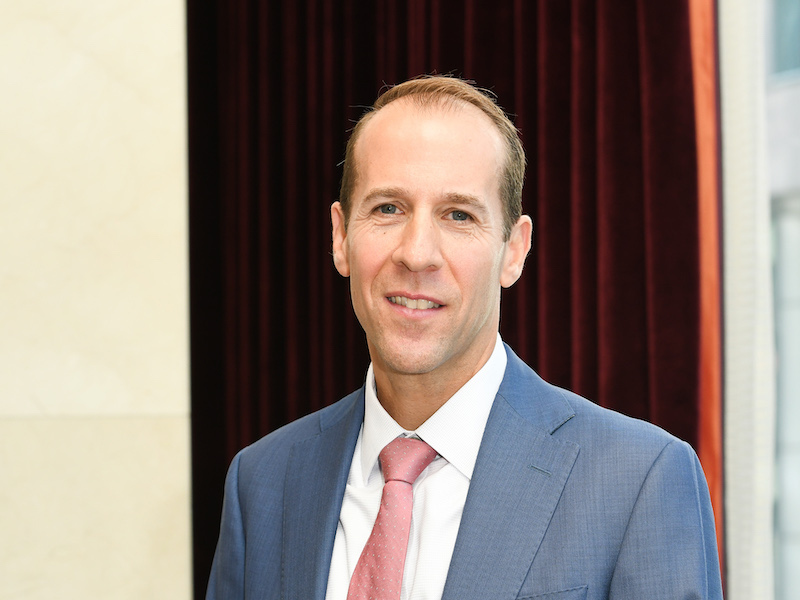

As greater numbers of defined contribution pension plan members ask for environmental, social and governance-friendly investment options, plan sponsors will need to grapple with how to implement these solutions into their target-date funds.
“From some studies that we’ve done, there’s definitely investor demand,” said Michael Greenberg, senior vice-president and portfolio manager at Franklin Templeton Investment Solutions, during Benefits Canada’s 2022 DC Investment Forum in late September. “We’re seeing investors start to ask for more options on their DC pension platforms that are sustainable, but . . . there are definitely some challenges.”
Read: ESG strategies, updated glide paths coming to target-date funds
The idea of what ESG investing looks like varies between investment managers and DC plan sponsors will have to consider the best approach for them. Managers have adopted a range of sustainability strategies, including negative screens that remove companies or whole sectors from a portfolio on ESG grounds, positive screens that seek to invest in companies that have been identified as best-in-class on sustainability metrics and seeking to engage with and turn around companies that are currently poor performs.
“If you’re forced to pick one, it becomes very difficult, especially when we’re talking about target-date funds . . . and say this is going to be sufficient for the broad market of Canadians,” said Greenberg.
He suggested plan sponsors have an element of all three approaches within their target-date fund lineup. “It will create an overall portfolio that has generally positive ESG characteristics versus a traditional benchmark. It will have exclusions for likely the most egregious industries and companies and you’re going to have access to that active ESG engagement manager,” he said, noting the latter type of manager has the potential to generate quite a bit of alpha for plan members.
Greenberg said a multi-manager, multi-strategy approach, called ESG-tilted investing, can meet a broad range of DC investor desires. Indeed, incorporating a mix of ESG strategies can take advantage of the wide disparity between ESG ratings agencies’ approaches to measuring companies’ sustainability, he said, citing the examples of both Apple Inc. and Amazon.com Inc. being rated as either leaders or laggards on various ESG metrics depending on the ratings agency.
“The rationale here is not that one [rater] is good and one is bad, they’re just different.”
Read: More standards required for pension funds using ESG data, indices and scores
Ratings agencies can use different proxies to measure the same metric or compare companies against different groups of peers. These ESG ratings also tend not to measure “ESG improvers” or companies that aren’t yet top performers, but are on a path to score better in the future, added Greenberg.
He noted Franklin Templeton has started to ignore the overall scores of ratings agencies and instead look at the underlying indicators they use to inform their scores, generating its own in-house ESG perspective. “We do our own materiality testing [on] which [factors] actually make a difference from a risk and return perspective and we re-weight those different weights per industry, based on what we think is material.”
The company employs passive core ESG strategies to exclude some companies or sectors through a best-in-class scoring methodology. But Greenberg said it’s “really important” to complement those strategies with some active management.
“These are strategies that may not have as many exclusions. They might not follow a best-in-class type process, but what they’re going to try to do is access certain companies that are poorly scoring today, but on a path to be better or in some cases are maybe mis-scored by the providers. We think that actually is a fertile place for excess returns.”
Read: Capturing lithium’s investment return potential as the electric car gains ground
These managers can also take advantage of macro ESG trends by going overweight on certain emerging sectors or themes like electric vehicles, the energy transition and more.
For DC plan sponsors considering investment managers, Greenberg recommends they understand their funds at a security-by-security level and question managers if a holding doesn’t align with their stated investing approach at face value. “With a best-in-class manager, what I wouldn’t want to see is a lot of poorly rated stocks. That’s a great opportunity to engage with that manager and test why they hold stock X, Y or Z.”
He also advocated for a dynamic asset allocation approach, which can manage unintended biases in portfolio construction — such as being overweight in European stocks in an ESG fund, which makes sense given the Eurozone’s regulatory regime — and take advantage of global trends.
Read more coverage of the 2022 DC Investment Forum.
